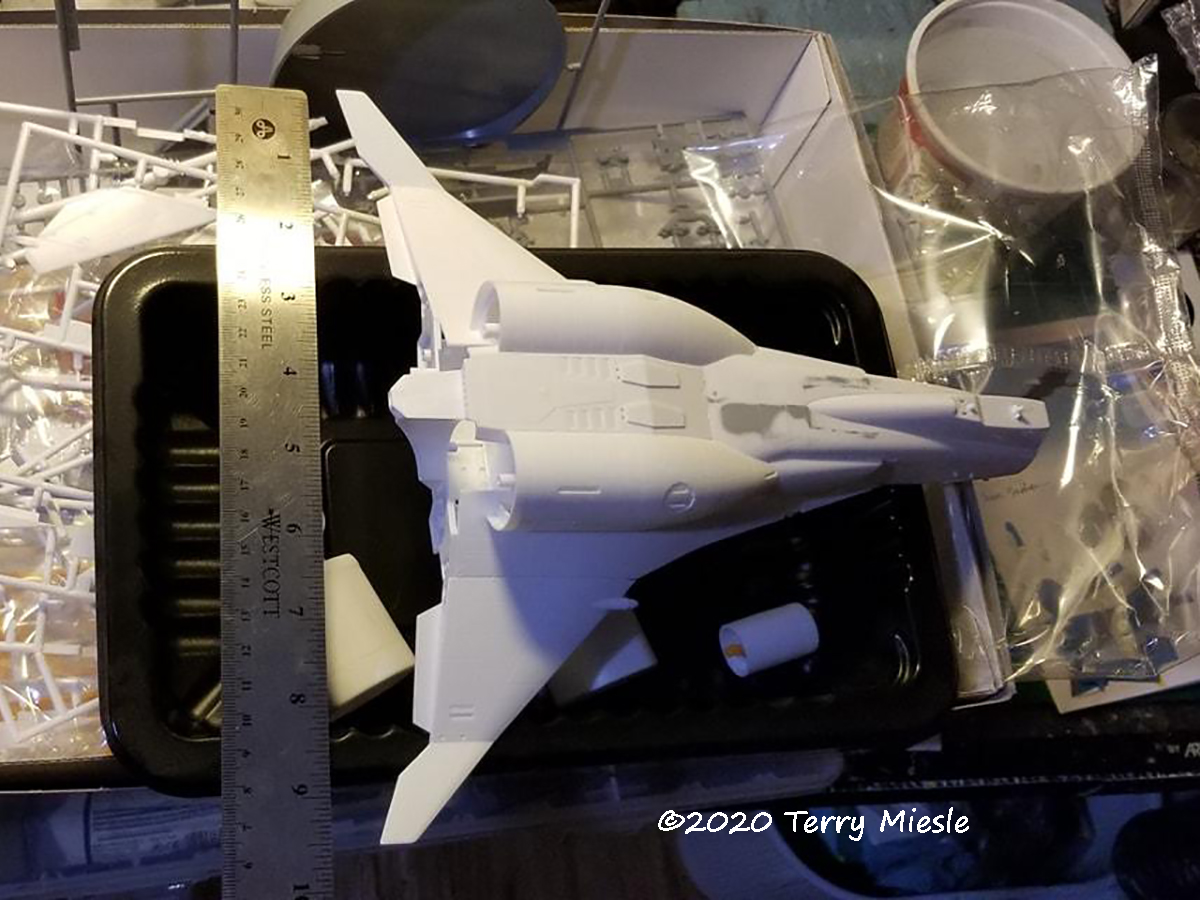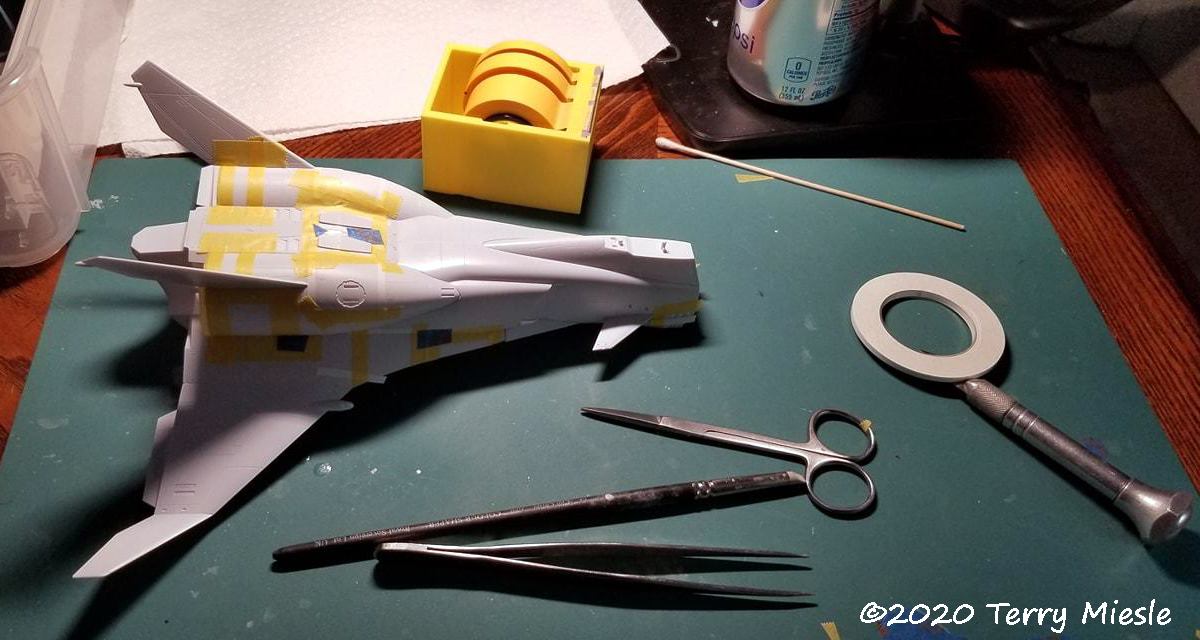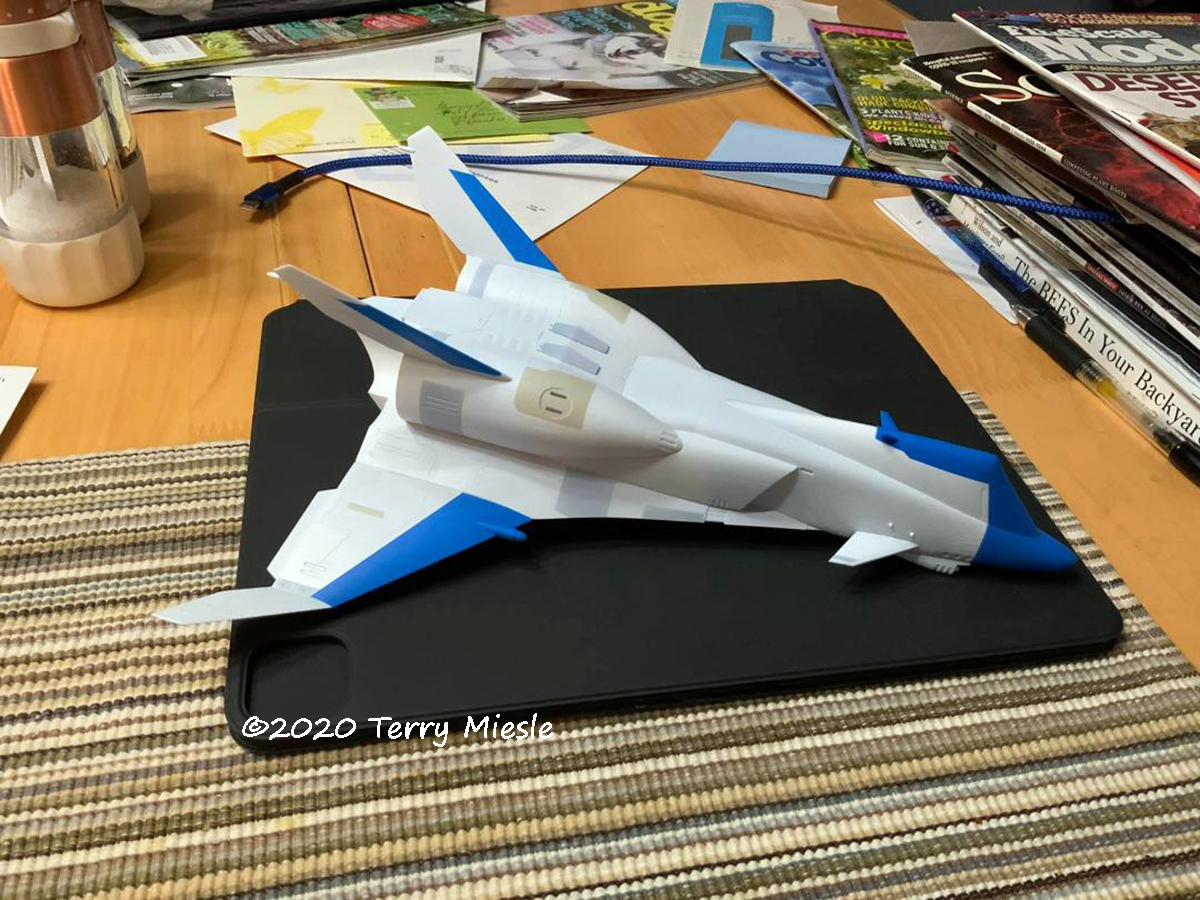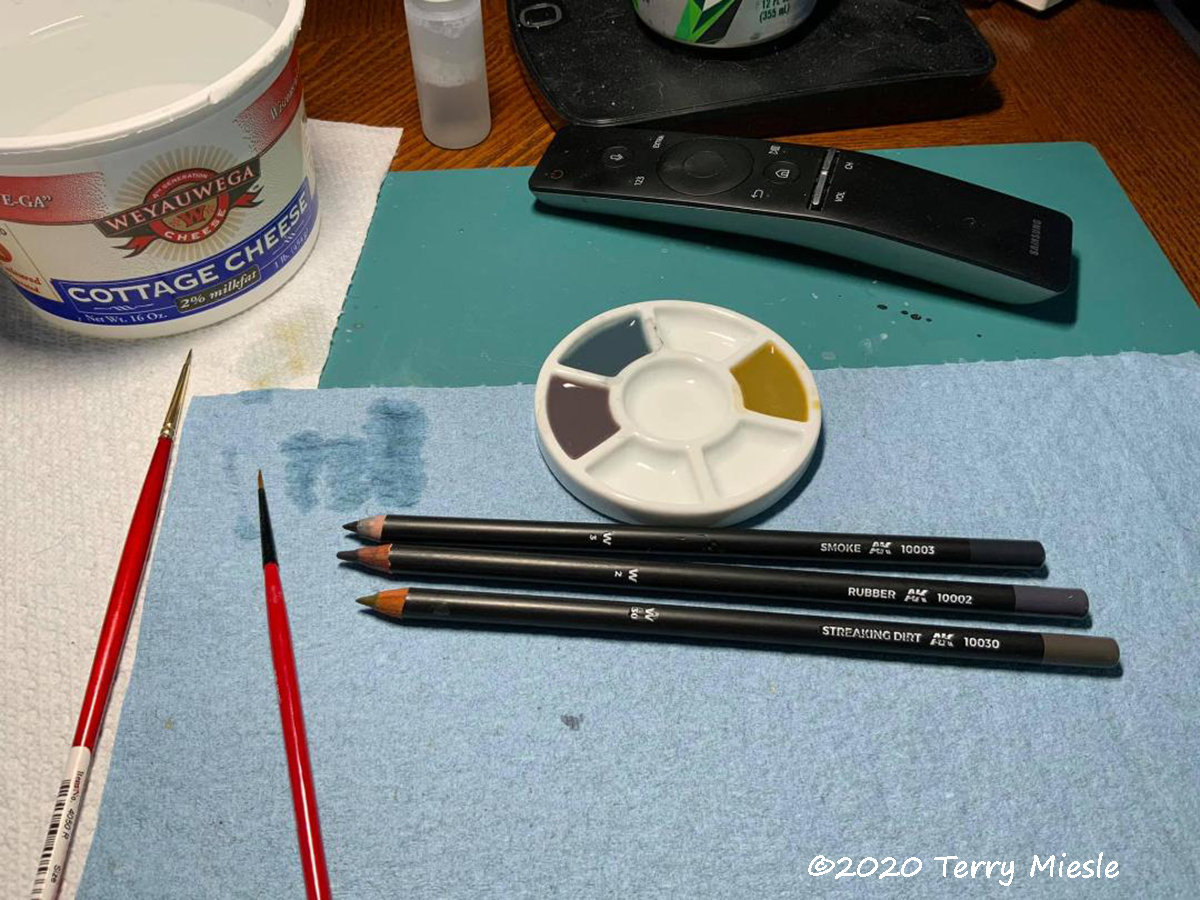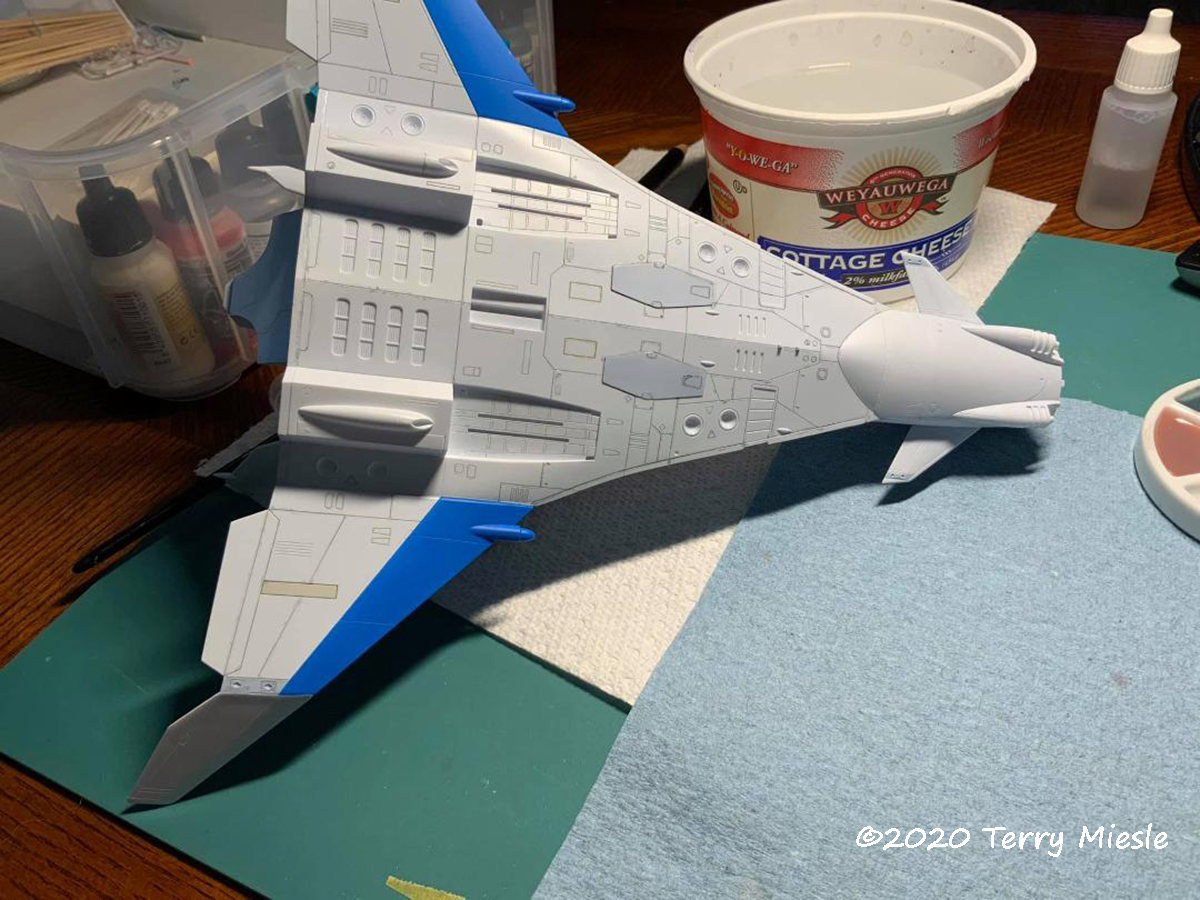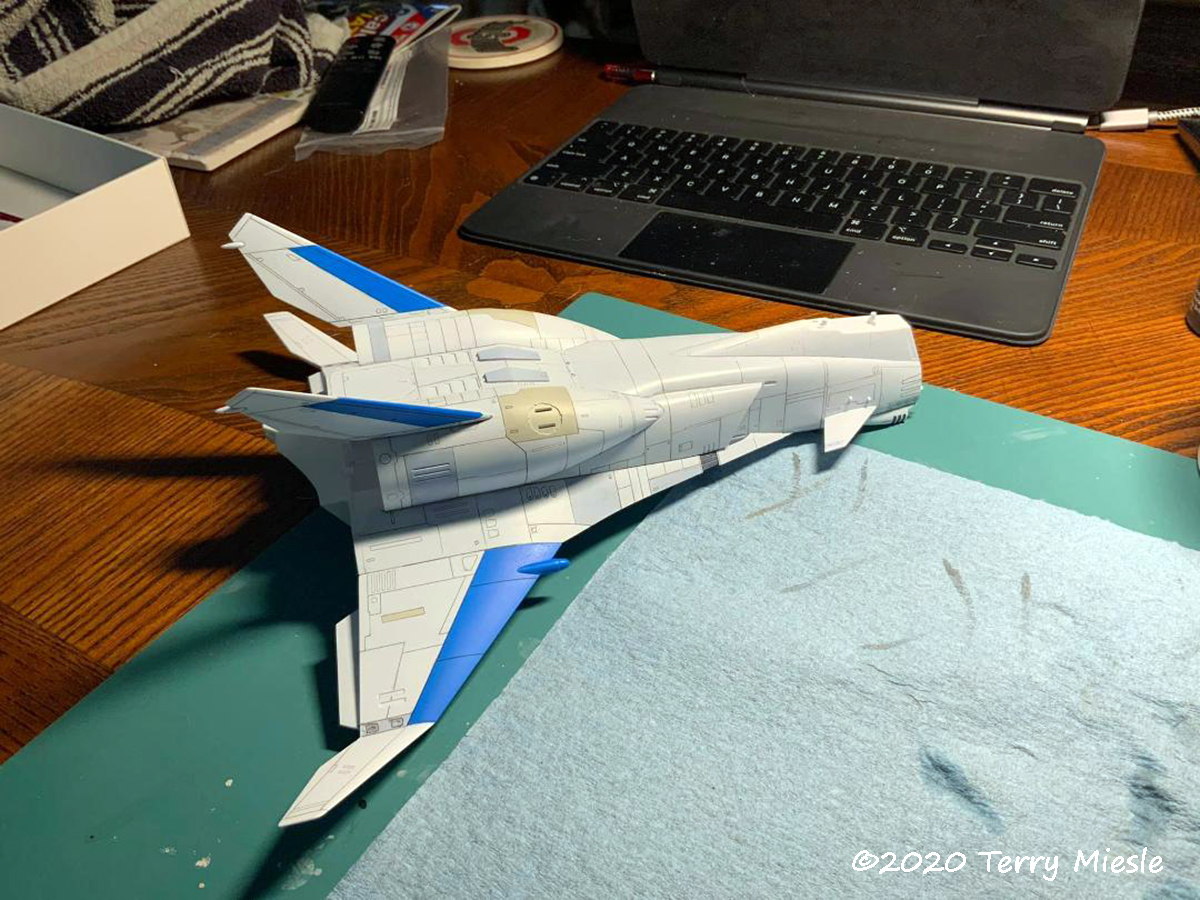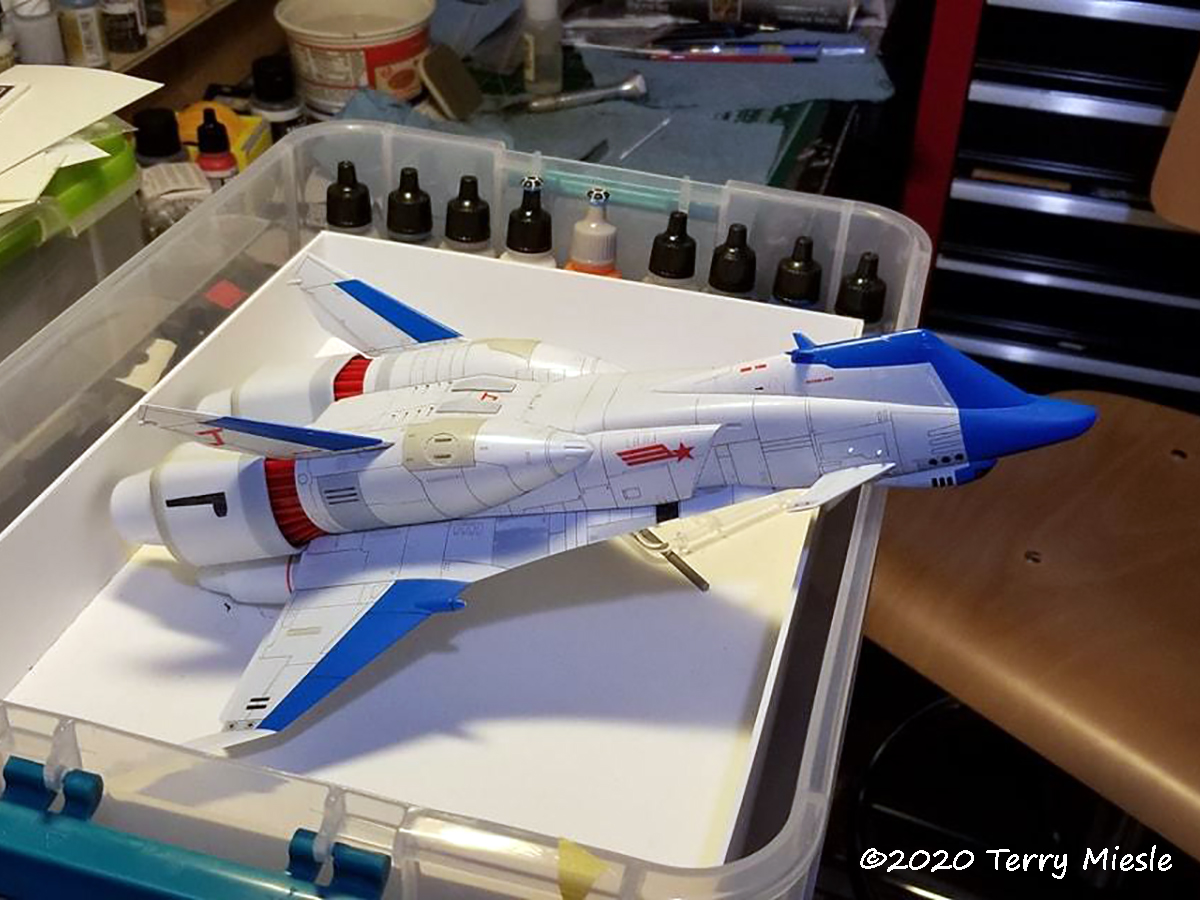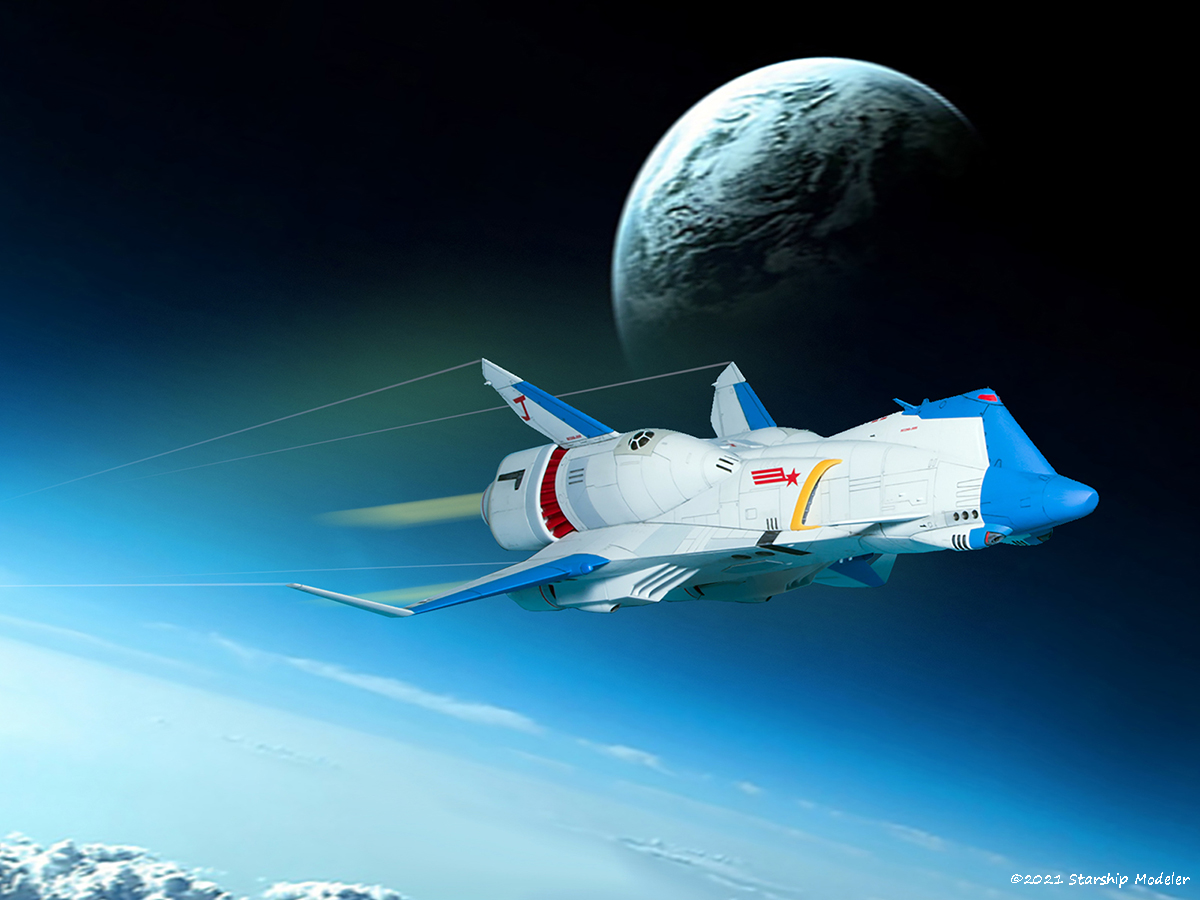
Snapshot |
|---|
| Scale: - 1/400 about 12.75"/ 30cm long when built. |
| Parts: Injection molded styrene; 124 parts (molded win white, blue, red and grey), (plus soft plastic figure of Alfin in special release). |
| Instructions: One sheet, multi-fold. Well designed and complete. Full-sized plans. |
| Decals: One large sheet of silk-screened waterslide markings, including windows, stripes, and other things which are probably easier painted. |
| Mold Quality: 9/10. No flash, very few ejector pin marks. A few depressions. |
| Fit: 8/10. Very good, but with a bit more engineering could have been perfect. |
| Detail: 9/10. Outstanding in most respects, but a few things are split in half. |
| Accuracy: 9.9/10 As far as I can tell, it's nearly perfect compared with the anime. |
| MSRP: ~$70.00 (~$88.00 CAN/ €59.43 EUR as of 8/2021 ), available from Starship Modeler . |
| Overall Rating: 9/10. A few better engineering choices would put it in Bandai territory. |
The Minerva is a very large space plane from a series of Japanese sci-fi novels (and an animated movie) called "Crusher Joe". The stories follow the exploits of "Crushers", a group of rugged individuals who took on the job of destroying asteroids and defining space lanes in the early days of space exploration. As the hero ship for an elite team led by "Crusher Joe" it has a lot of capabilities like VTOL, trans-atmospheric capacity, the armament of a Frigate, and even two fighters and a land transport in its bay. Joe's crew is often called upon for risky rescue missions etc. which might prove embarrassing or difficult for official channels.
The novels date back to 1977, the first anime movie was released in 1983. It shares a lot of style with Macross, and the vehicles look very much in place in that universe - though they are not. Models date back to the 1980s by Takara,and are still considered high quality. The Minerva was released in a Battletech boxing as a Leopard-Class Dropship, along with designs from Macross and Dougram.
Hasegawa's Creator Series of models continues to perform pretty well for them, judging by their consistent releases and their high quality. Their focus on underserved subjects is commendable, particularly since these properties are fan favorites. The Crusher Joe model line currently includes various boxings of the Minerva in 1/400 scale, Cordoba (a destroyer) in 1/3000 and fighters in 1/72. All are thoroughly modern kits with very good build quality and engineering.
I can say only two things would have made this a better kit. First, if it were in 1/350 scale to be in direct comparison with a wide variety of other sci-fi subjects and diorama accessories. Second, if it were made by Bandai. There are some sink marks and some annoyances like split aft thrusters, and some little fit glitches which should not cause any major problems. Panel lines are very fine, you'll need to re-scribe if you find the need to do any sanding.
The instructions are well considered and complete. The kit has full-sized drawings/plans, as do the other Crusher Joe kits, and I welcome this addition. It really lets you plan out painting.
There are accessories and options. Weapons can be displayed open or closed, landing gear stowed or deployed - but you must choose these options before building. Those parts look great, and I'm already thinking about building a second with all those parts deployed. You also get two fighters, molded in blue and red and the little land Galleon molded in grey. There are no clear parts in the kit.
It's a big model, 12.75"/ 30cm long and 9.7"/ 24.5cm in span. That's a scale length of 118m for the ship - so not a mere Space Shuttle knock-off, though it does borrow from that design. The stand is basic, which allows creativity, and an adjustable connector lets you display the model at a variety of angles.
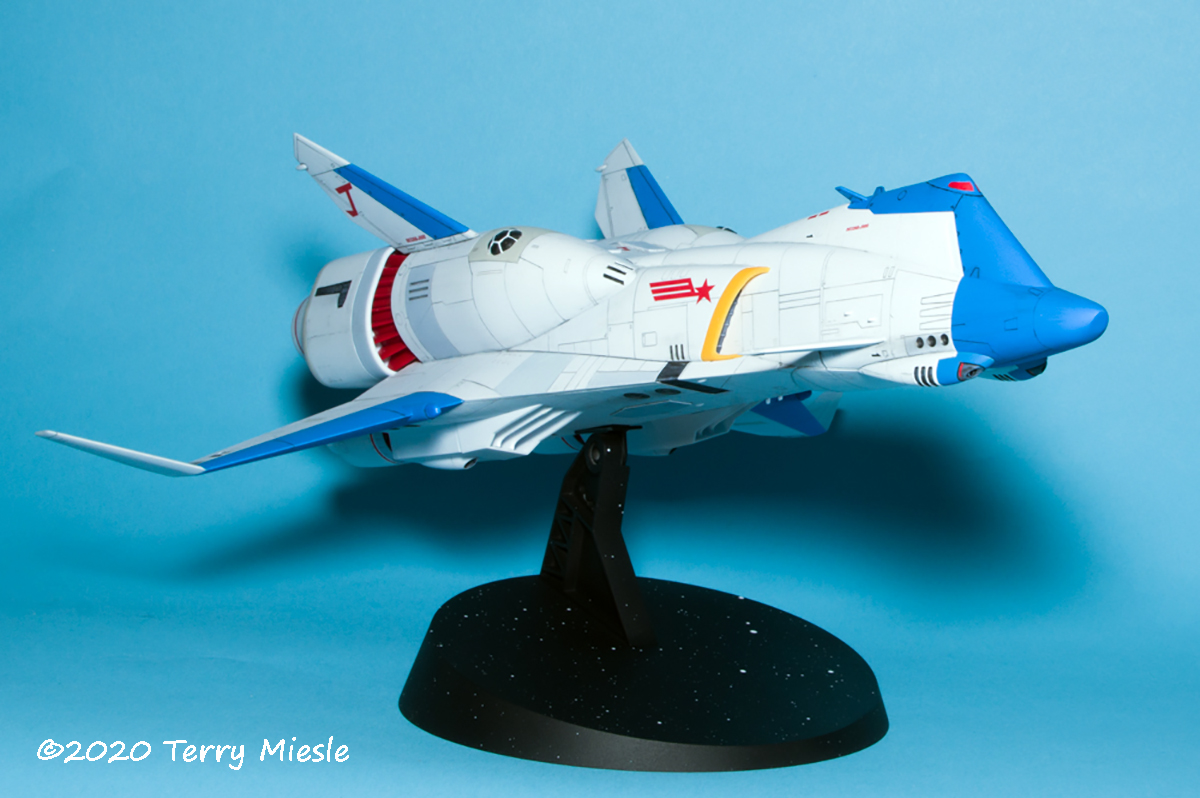
I followed the assembly instructions with the exception of leaving the nose parts off to more easily paint them blue without masking - they do fit fine after painting, so that's no issue. There are few surprises in construction. The ventral intakes must be painted off the kit if you want to paint the air ducting. The landing gear closed doors are a bit tricky to install. There's a seam along the dorsal spine which must either be filled or considered a panel line. Engine pods can all be painted separately, along with the red radiator fins, and assembled at the last step. This makes painting a lot easier. Very little putty work was required. I don't even remember where I used any.
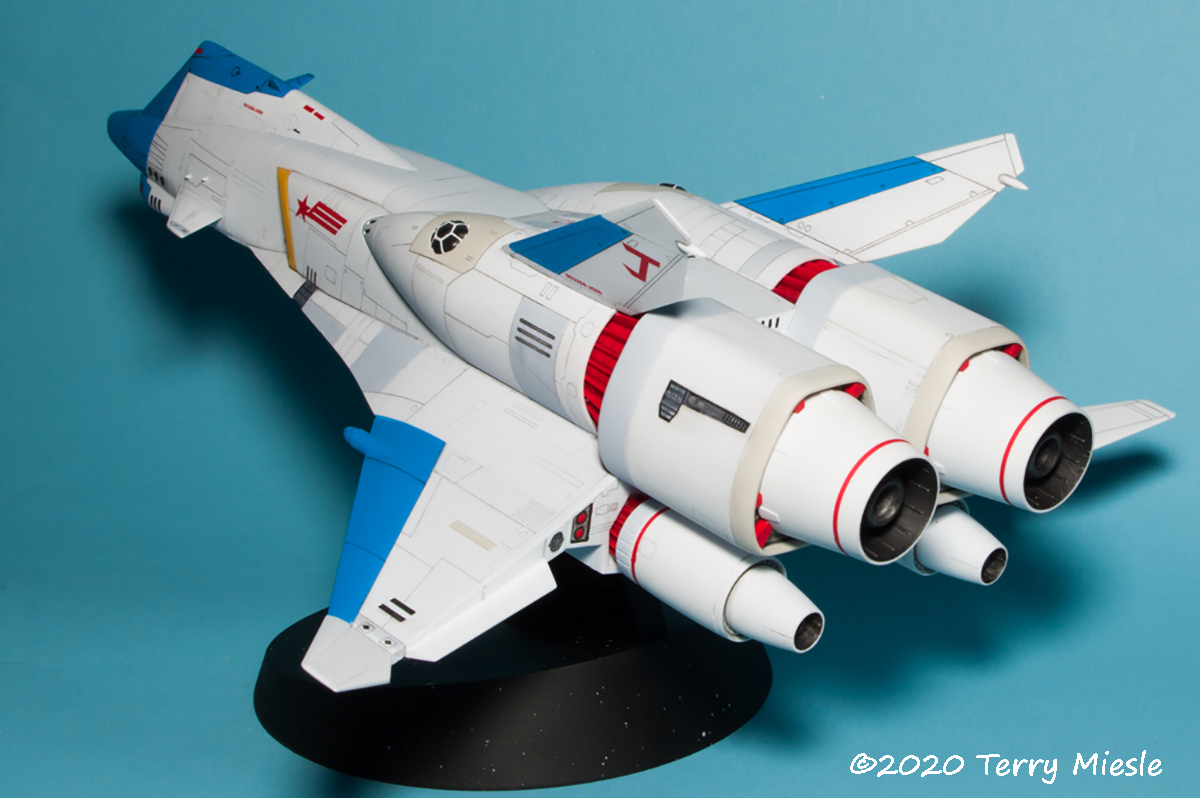
All paints used on this build were Acrylicos Vallejo (AV) Game or Model Air. (The specific paints I used are listed below). No primer was used, just a good base coat. I used a bit of AV airbrush thinner and a couple drops of AV airbrush flow improver with the paints. This dilution was probably about 15% at most. Airbrushes I used were the Iwata Eclipse and the detail Iwata HP-C.
Each color was sealed with a mixture of 60% Pledge Floor Magic (Future) and 40% AV Airbrush Thinner. I find this gives a good pattern and protective coat for further masking and handling.
Panel lining was done with AK Interactive and Derwent watercolor pencils diluted in water with Liquitex Flow Aid, some India Ink in Future and some AV acrylic wash Dark Grey.
Decals are good, very thin and opaque - but be careful, they don't like to be moved. I had to paint a few of the red windows due to decal mishaps.
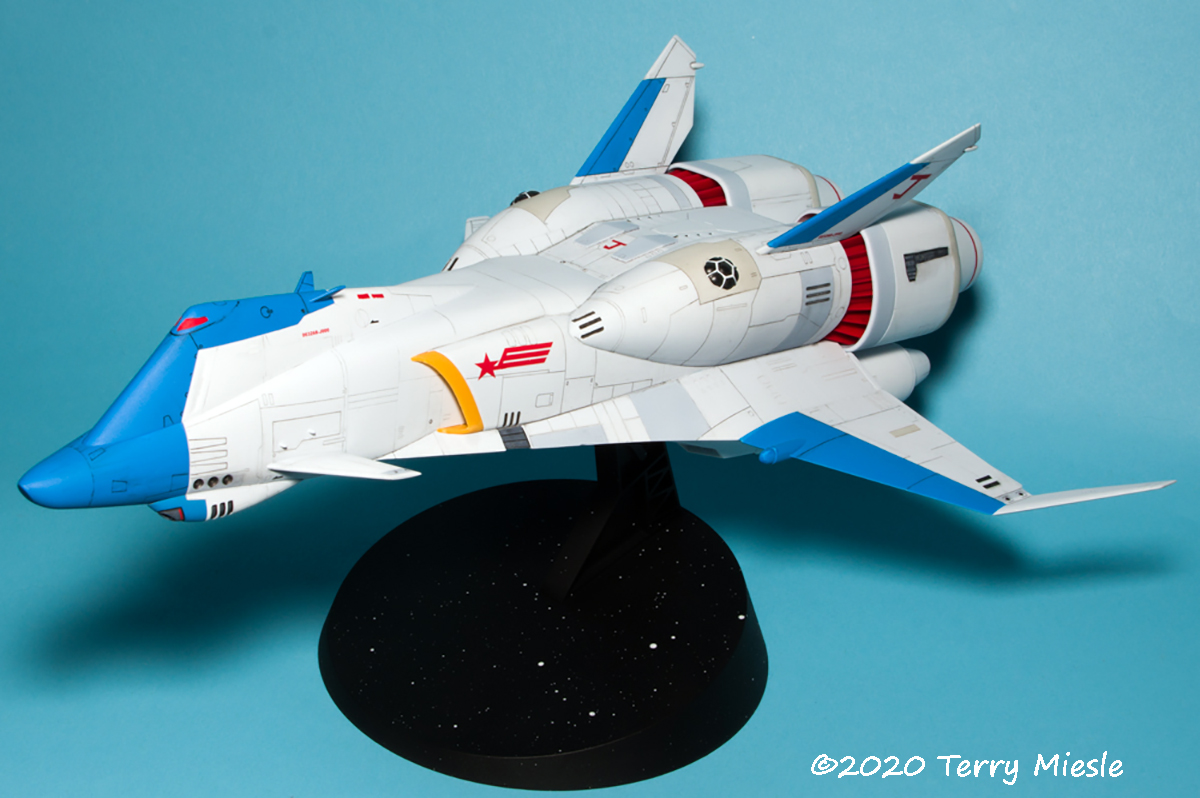
For those who like to skip to the end, this is a great kit nearly on par with Bandai releases. It's big, though I'd like to have seen it a bit bigger in 1/350 scale. Follow the instructions but leave the engine and nose sub-assemblies off for painting. You need to choose whether the options like weapons and landing gear are deployed, you can't reposition them.
The finished model is really nice, the detail is appropriate for the scale and the inclusion of the scale fighters and Galleon are a nice touch. If you wanted to light this kit it would not be difficult, but from what I can tell, it's just the cabin and bridge windows on the nose.
Recommended!
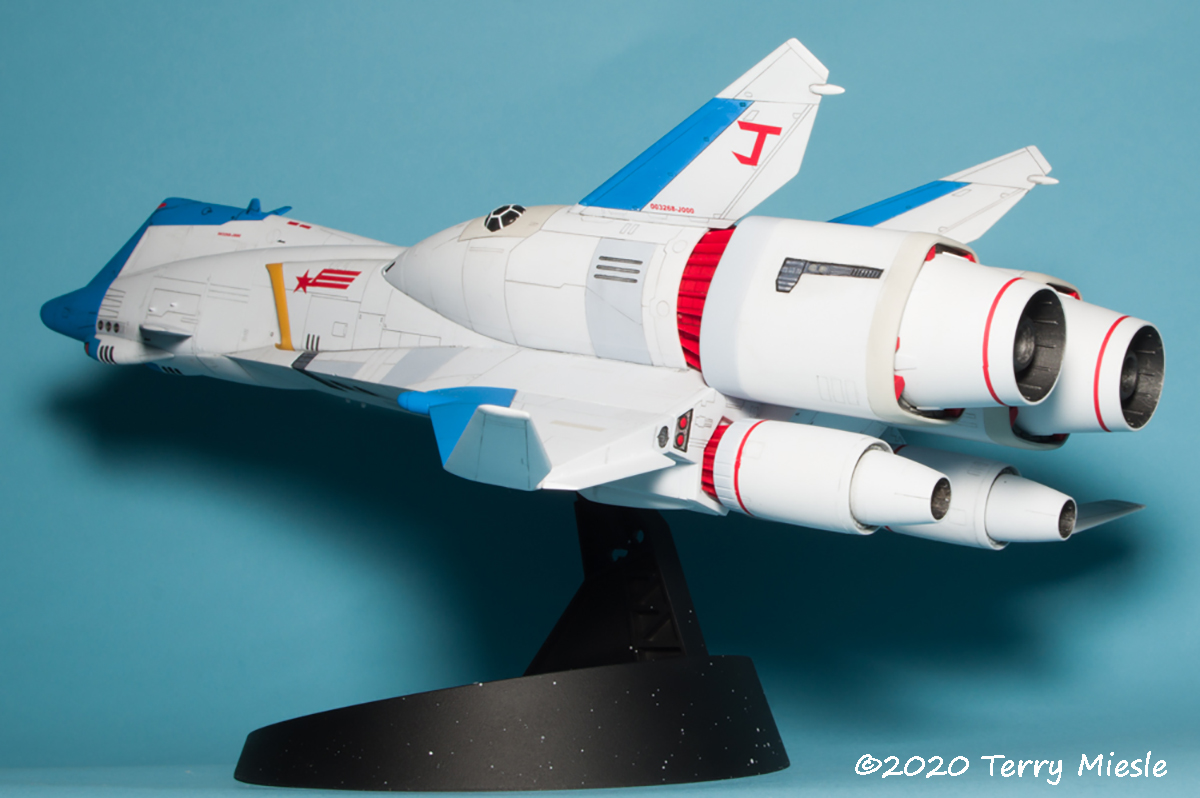
Click on any image below to bring up the gallery.
